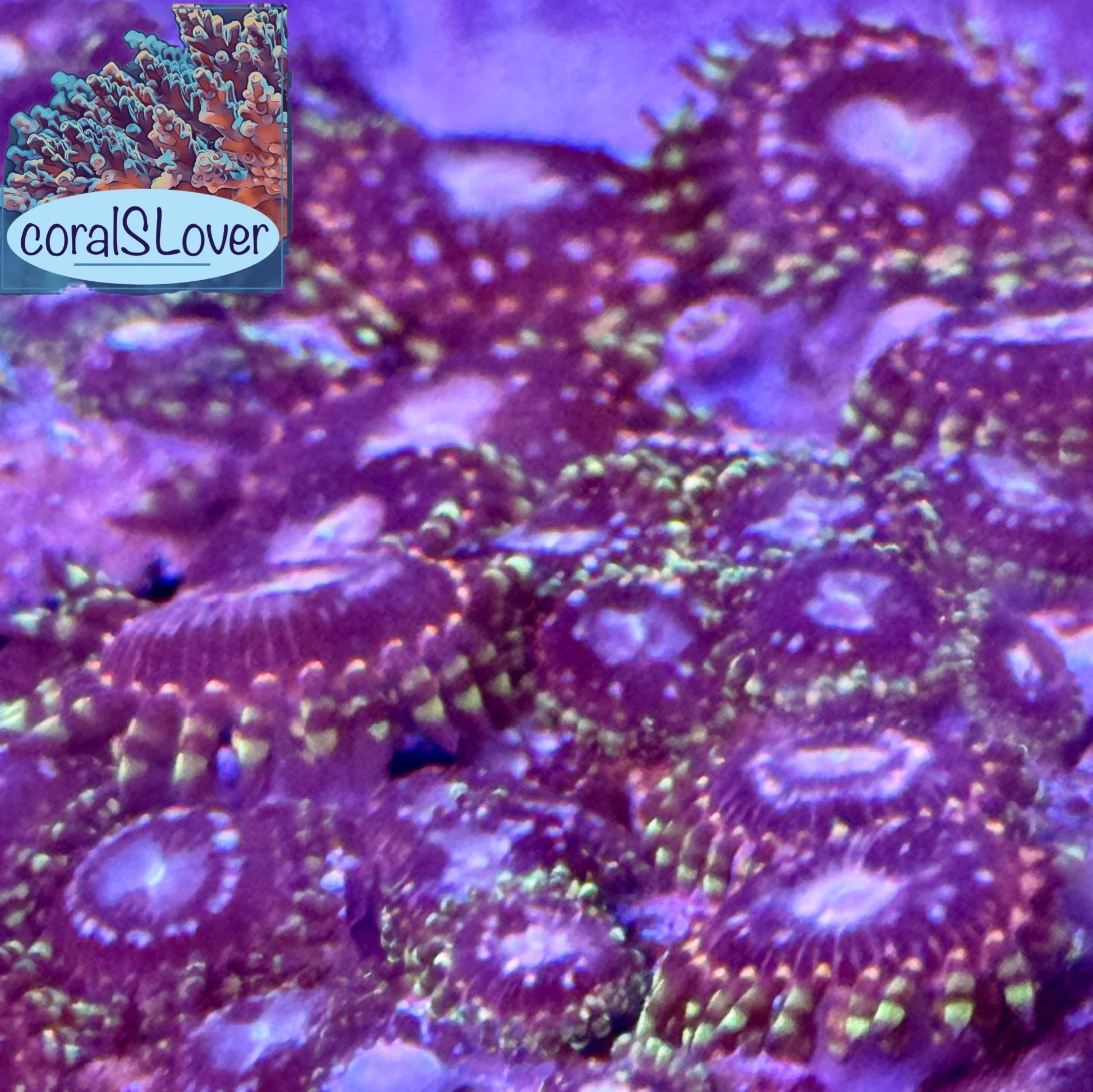Information
Zoanthus and Palythoa are a large group of corals in the reef keeping hobby. They come in an incredible range of colors and patterns making them very popular with both beginner hobbyists and rare coral collectors tracking down uncommon color morphs. In terms of care, both Zoanthus and Palythoa are fairly easy to keep. They tolerate a wide range of lighting intensities and water conditions. Once settled in, zoas multiply quickly.
Lighting
Zoanthus and Palythoa are not as demanding as other corals when it comes to lighting. They can be kept under a wide variety of lighting types, and are tolerant of both low and high light conditions. It is always wise however to acclimate new arrivals in lower light areas because it is far more likely to be damaged from overexposure than starve from underexposure.
Water Flow
Zoanthus by their very shape invite detritus accumulation and a zoa colony that is dirty is very different than one that is kept clean. The buildup of detritus can slow a colony’s growth or even cause it to die back.
Strong water flow helps keep detritus buildup to a minimum as well as flushing away waste that the colony generates.
When designing flow patterns for this coral I like to provide strong consistent flow with short bursts of very strong flow. If you do jot have controllable pumps to achieve this it can be done manually with a turkey baster. Once a day you can squirt water at the colony to dislodge any buildup. I use just enough force to close the polyps up.
If you decide to go this route only do this with established colonies that are well attached. If you have a freshly glued frag of zoas they might get blown away.
Feeding
While both Zoanthus and Palythoa polyps derive much of their energy from the products of their zooxanthellae, they do have the ability to capture prey. Palythoa seem to feed much more readily than their Zoanthus counterparts.






